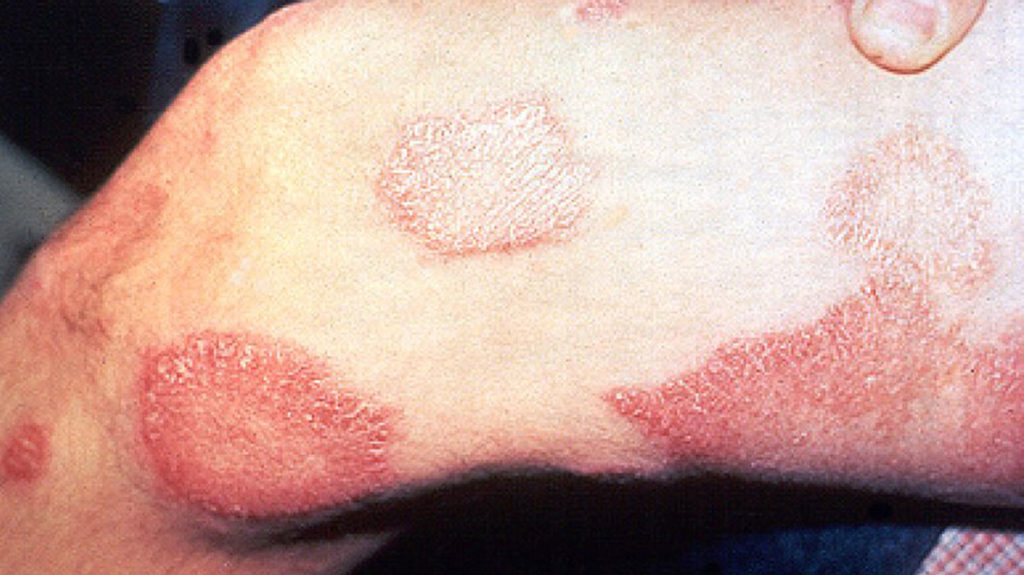LEPROSY

Definition: Leprosy is a chronic infectious disease caused by the bacteria Mycobacterium leprae. The disease can affect the skin, mucous membranes, and eyes and some of the nerves that are located outside the central nervous system (peripheral nerves). These are primarily the nerves of the hands, feet, and eyes, and some of the nerves in the skin. [1]
For many years Leprosy was considered a mysterious disorder associated with some type of curse, and persons with the disease were isolated and ostracized. [1]
Other Names: Hansen’s Disease
Symptoms
Symptoms of Leprosy include:
- Skin lesions that are lighter than your normal skin color
- Lesions have decreased sensation to touch, heat, or pain
- Lesions do not heal after several weeks to months
- Numbness or absent sensation in the hands, arms, feet, and legs
- Muscle weakness [2] (in severe cases)
All forms of the disease eventually cause nerve damage in the arms and legs, which causes sensory loss (paresthesias) in the skin and muscle weakness. People with long-term leprosy may lose the use of their hands or feet due to repeated injury resulting from lack of sensation. [3]
Causes
The bacterial organism Mycobacteriumleprae causes leprosy. [3] It is not very contagious (difficult to transmit from person to person) and has a long incubation period (time before symptoms appear). This makes it difficult to determine where or when the disease was contracted. Children are more susceptible than adults to contracting the disease.
Leprosy has two common forms, tuberculoid and lepromatous, and these have been further subdivided. Both forms produce sores on the skin, but the lepromatous form is most severe. [3] In this form, the bacterial infection is more widespread and produces large, disfiguring lumps and bumps. [3]
Leprosy is common in many countries worldwide, and in temperate, tropical, and subtropical climates. Approximately 100 cases per year are diagnosed in the United States. Most cases are limited to the South, California, Hawaii, and U.S. island possessions. The emergence of drug-resistant Mycobacterium leprae, as well as increased numbers of cases worldwide, has led to global concern about this disease. [3]
Transmission of Leprosy
The entry route of M. leprae into the human body is also not definitively known: the skin and the upper respiratory tract are most likely. While older research dealt with the skin route, recent research has increasingly favored the respiratory route. The CDC notes the following assertion about the transmission of the disease: “Although the mode of transmission of Hansen’s disease remains uncertain, most investigators think that M. leprae is usually spread from person to person in respiratory droplets.” [4]
Diagnosis
Diagnosis of Leprosy can be confirmed by a skin lesion biopsy or skin scraping examination. [3]
Treatment
Effective medications exist for Leprosy and isolation of victims in “leper colonies” as was done previously is unnecessary. Early recognition of Leprosy is important. Early treatment limits damage by the disease, renders the person noninfectious (you can’t catch the disease from them), and allows for a normal lifestyle. [3]
Multiple Drug Therapy (MDT) is a highly effective for treatment of Leprosy and patients are no longer infectious after the first monthly dose. [7] It is safe and easy to use under field conditions due to its presentation in calendar blister packs. [7] Relapse rates remain low, and there is no known resistance to the combined drugs. [5]
The WHO Study Group’s report on the Chemotherapy of Leprosy in 1993 recommended two types of standard MDT regimen be adopted. The first was a 24-month treatment for multibacillary (MB or lepromatous) cases using rifampicin, clofazimine, and dapsone. The second was a six-month treatment for paucibacillary (PB or tuberculoid) cases, using rifampicin and dapsone. [5]
Multidrug therapy (MDT) treatment has been made available by the WHO free of charge to all patients worldwide since 1995. [5]


